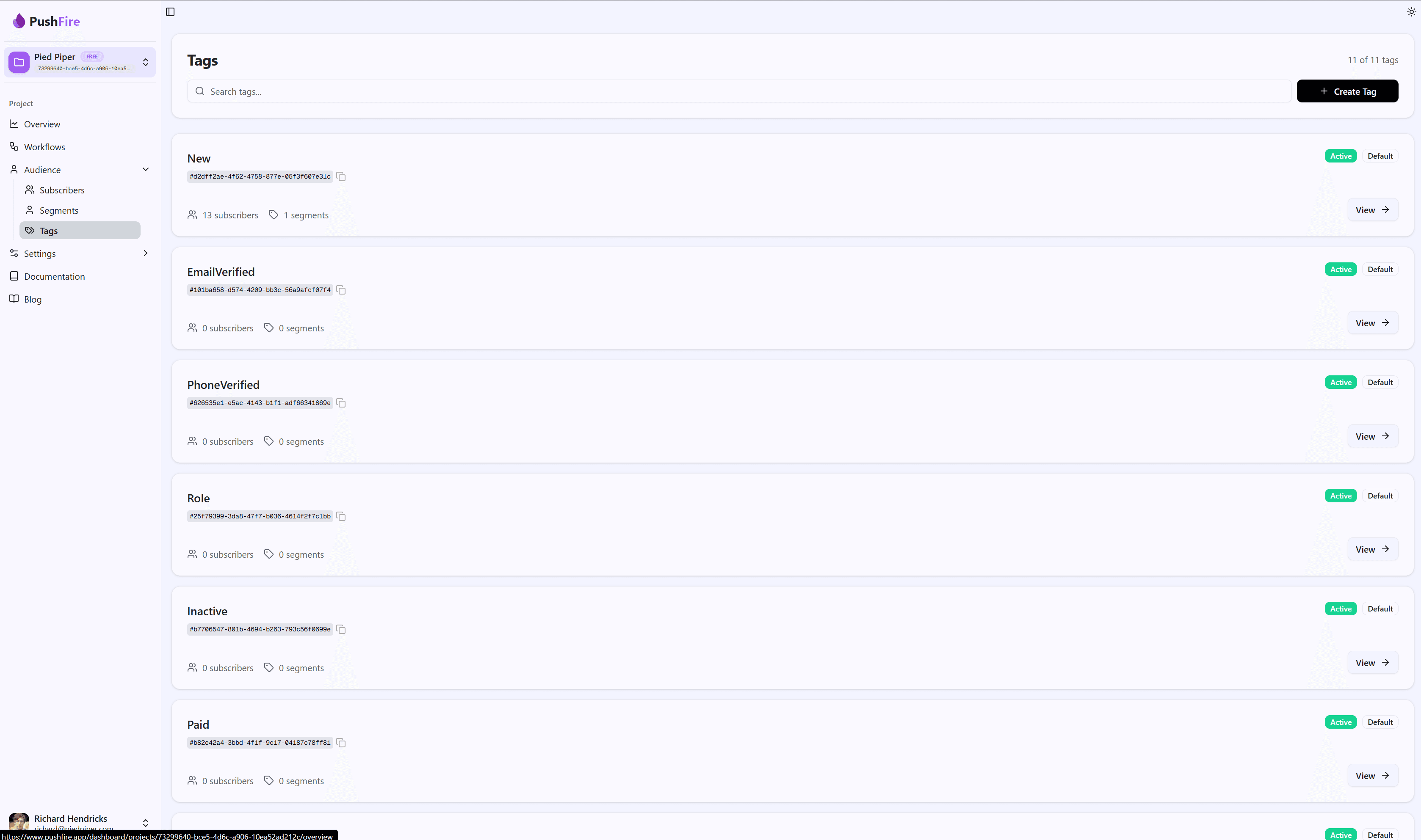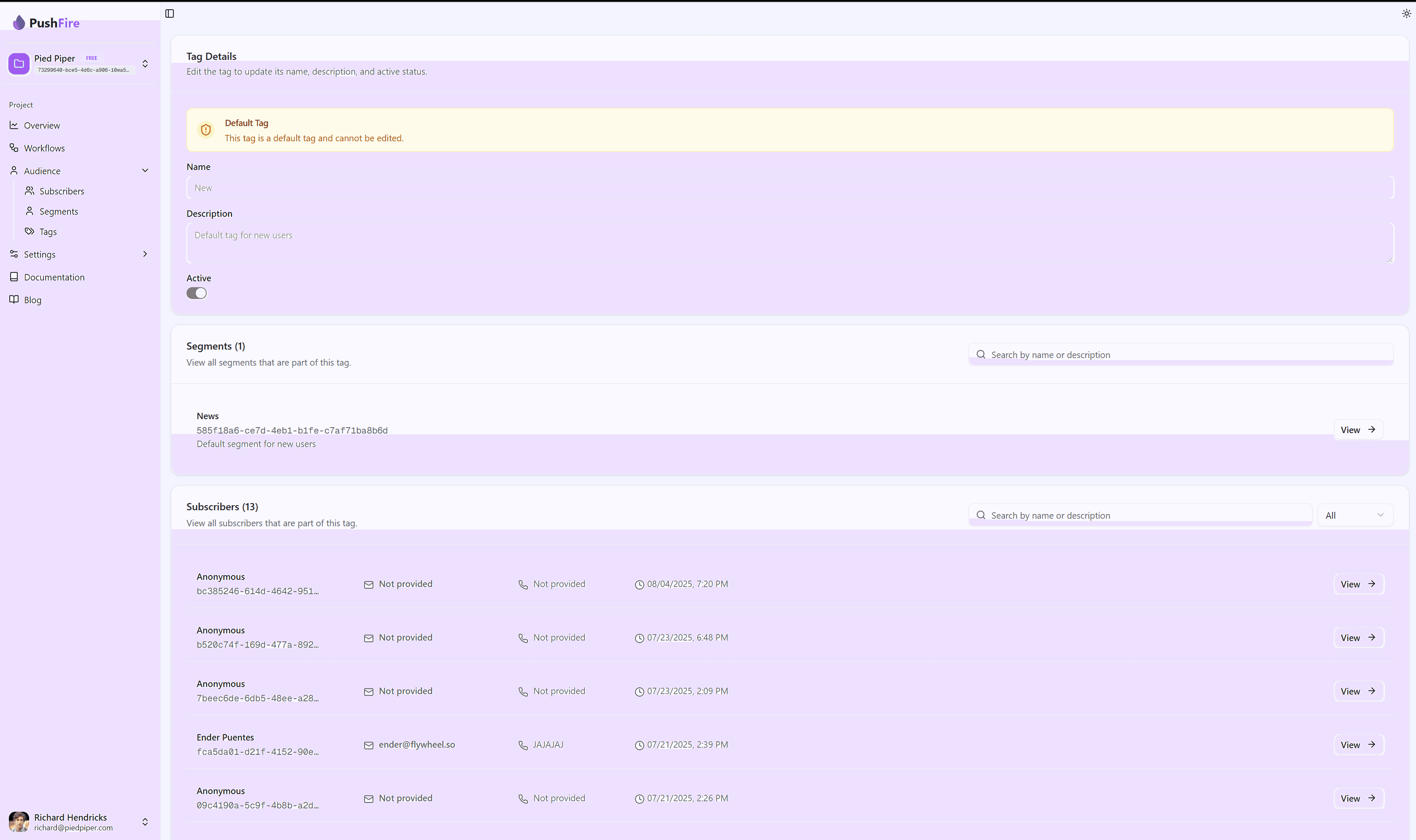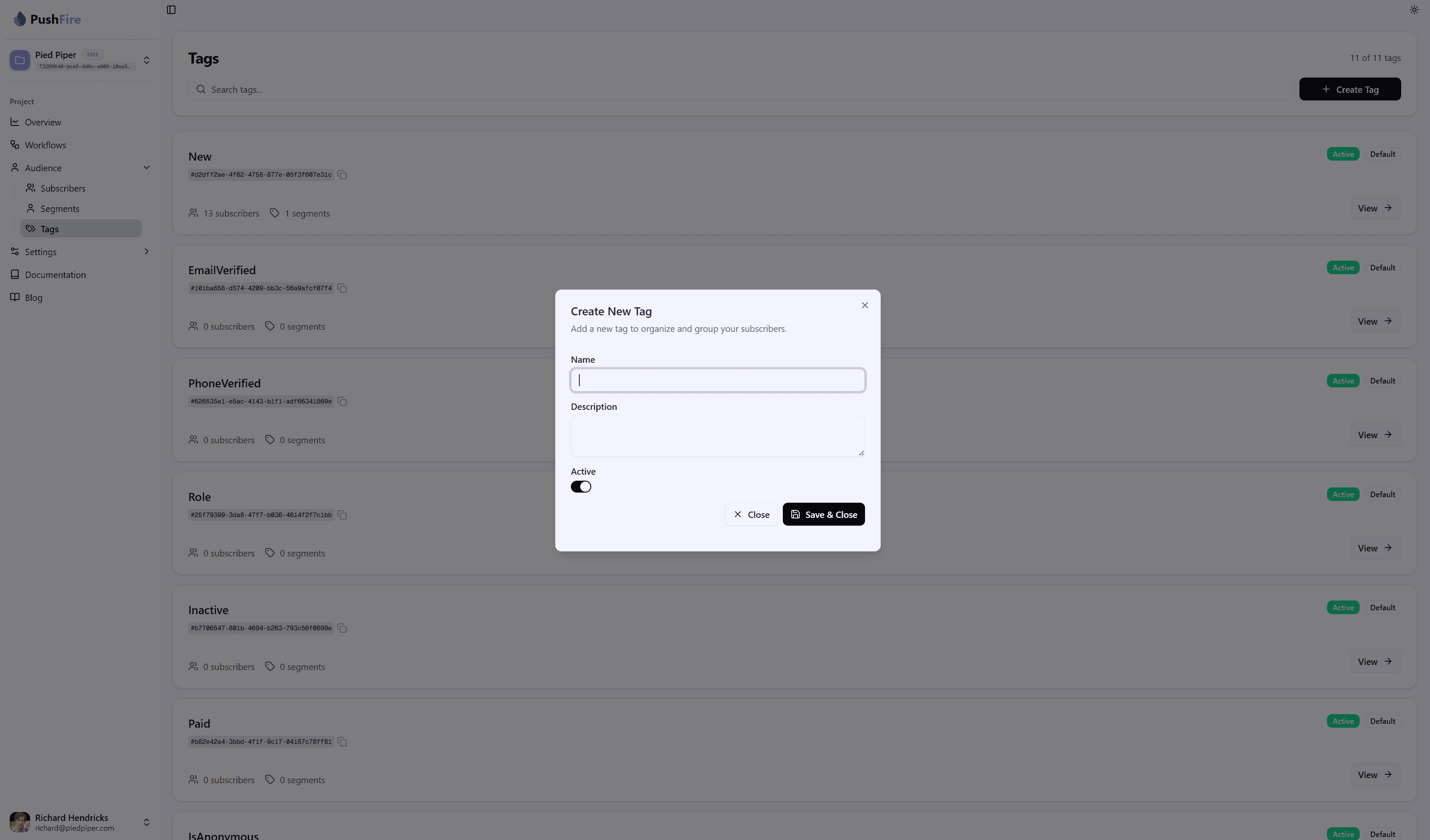Tags
Getting Started
What Are Tags?
Tags are labels you can assign to subscribers to:
- Categorize: Organize users by traits or behaviors.
- Filter: Quickly find specific user groups.
- Segment: Build segments using tag combinations.
- Personalize: Tailor messages based on users' tags.
System Default Tags
PushFire automatically creates protected tags for each new project:
User Status
- New: Newly registered user
- Inactive: Inactive user
- IsAnonymous: Anonymous user
- IsDeviceless: User without devices
- HasDevices: User with devices registered
Verification
- EmailVerified: Verified email
- PhoneVerified: Verified phone
Plan and Role
- Paid: User with paid plan
- Role: User role
Activity
- LastActive: Last activity timestamp
Tag Assignment
Automatic
- New: Assigned to all new users
- IsAnonymous: Assigned if no external_id
- LastActive: Assigned at registration
Manual
- Assign custom tags via subscriber profile or bulk actions.
Custom Tags
Classification: plan (free, premium, enterprise), status (new, active, inactive, vip), origin (web, app, referral)
Behavior: buyer, engagement, interest
Campaigns: promo_black_friday, trial_expiring, onboarding_week1
Managing Tags
Tag List
View all tags in a structured table with:
- Name: Tag identifier
- Description: Purpose or usage of the tag
- Status: Active / Inactive
- Type: System (protected) or Custom
- Subscribers: Number of users assigned
- Segments: Number of segments using the tag
- ID: Unique identifier

Tag Detail / Edit / Delete
- Requires Editor or Owner role
- Allows you to:
- View detailed information about the tag
- Edit name, description, and status
- Delete the tag along with all associated links (with confirmation)

Creating a New Tag
- Available via “Create Tag” button in the main page or modal dialog
- Only Editor or Owner role can create tags
- Form includes:
- Name (unique identifier)
- Description (purpose)
- Status (active/inactive)
Automatic validation for required fields

Best Practices
- Use consistent, descriptive names
- Document each custom tag
- Regularly clean unused tags
- Use combinations and dynamic values for advanced segmentation and automation